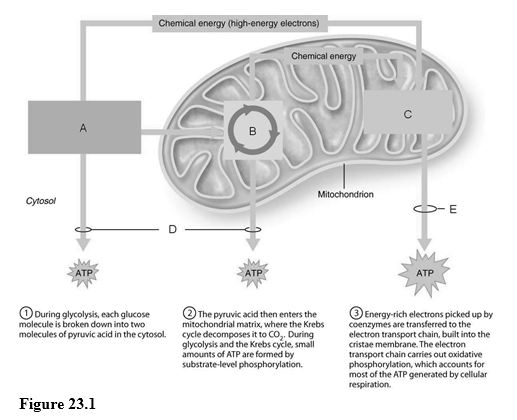The various types of epithelial tissues are classified by ________.
A. the size and the location of the cells
B. the number of cell layers and the size of the cells
C. the size and shape of the cells at the free surface
D. the shape of the cells at the free surface and the number of cell layers
Answer: D
You might also like to view...
The ability of smooth muscle to function over a wide range of lengths is called
A) elasticity. B) contractility. C) extensibility. D) plasticity. E) variability.
Using Figure 23.1, match the following:

1) Ten-step enzymatically driven process that converts glucose into pyruvic acid.
2) Occurs via substrate-level phosphorylation.
3) Produces the CO2 involved during glucose oxidation.
4) Where the hydrogens removed during the oxidation of food fuels are combined with O2.
5) Contains ATP synthases, small rotary motors.
6) ATP formed by oxidative phosphorylation.
7) Involves sugar activation, sugar cleavage, and oxidation and ATP formation.
A cilium or flagellum originates from a structure called a(n) ____________________
Fill in the blank(s) with correct word
The thick-walled arteries close to the heart are called muscular arteries.
a. true b. false